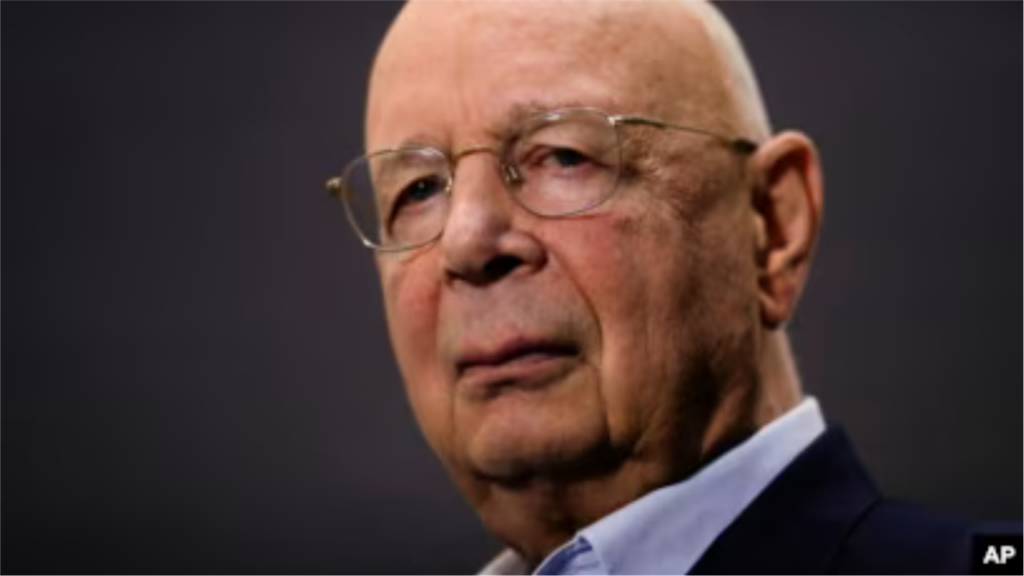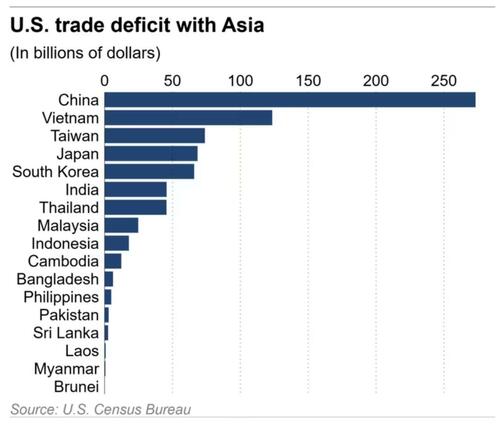Trump Issues Executive Order on Gain-of-Function Studies

Here is the E.O.: https://www.whitehouse.gov/presidential-actions/2025/05/improving-the-safety-and-security-of-biological-research/
Nic Hulscher did an excellent job discussing it here. Here is the order. I have bolded the areas I will discuss.
By the authority vested in me as President by the Constitution and the laws of the United States of America, it is hereby ordered:
Section 1. Purpose. Dangerous gain-of-function research on biological agents and pathogens has the potential to significantly endanger the lives of American citizens. If left unrestricted, its effects can include widespread mortality, an impaired public health system, disrupted American livelihoods, and diminished economic and national security.
The Biden Administration allowed dangerous gain-of-function research within the United States with insufficient levels of oversight. It also actively approved, through the National Institutes of Health, Federal life-science research funding in China and other countries where there is limited United States oversight or reasonable expectation of biosafety enforcement.
This recklessness, if unaddressed, may lead to the proliferation of research on pathogens (and potential pathogens) in settings without adequate safeguards, even after COVID-19 revealed the risk of such practices.Sec. 2. Policy. It is the policy of the United States to ensure that United States federally funded research benefits American citizens without jeopardizing our Nation’s security, strength, or prosperity. My Administration will balance the prevention of catastrophic consequences with maintaining readiness against biological threats and driving global leadership in biotechnology, biological countermeasures, biosecurity, and health research.
Sec. 3. Stop Dangerous Gain-of-Function Research. (a) The Director of the Office of Science and Technology Policy (OSTP), in coordination with the Director of the Office of Management and Budget and the Assistant to the President for National Security Affairs (APNSA), and in consultation with the Secretary of Health and Human Services and the heads of other relevant executive departments and agencies (agencies) identified by the Director of OSTP, shall establish guidance for the heads of relevant agencies, to the extent consistent with the terms and conditions of the funding, to immediately:
(i) end Federal funding of dangerous gain-of-function research conducted by foreign entities in countries of concern (e.g., China) pursuant to 42 U.S.C. 6627(c), or in other countries where there is not adequate oversight to ensure that the countries are compliant with United States oversight standards and policies; and
(ii) end Federal funding of other life-science research that is occurring in countries of concern or foreign countries where there is not adequate oversight to ensure that the countries are compliant with United States oversight standards and policies and that could reasonably pose a threat to public health, public safety, and economic or national security, as determined by the heads of relevant agencies.
(b) The Director of OSTP, in coordination with the Director of the Office of Management and Budget and the APNSA, and in consultation with the Secretary of Health and Human Services and the heads of other relevant agencies, shall establish guidance for the Secretary of Health and Human Services and the heads of other relevant agencies with respect to suspension of federally funded dangerous gain-of-function research, pursuant to the terms and conditions of the relevant research funding, at least until the completion of the policy called for in section 4(a) of this order. Heads of agencies shall report any exception to a suspension to the Director of OSTP for review in consultation with the APNSA and the heads of relevant agencies.Sec. 4. Secure Future Research Through Commonsense Frameworks. (a) Within 120 days of the date of this order, the Director of OSTP, pursuant to 42 U.S.C. 6627 and in coordination with the APNSA and the heads of relevant agencies, shall revise or replace the 2024 “United States Government Policy for Oversight of Dual Use Research of Concern and Pathogens with Enhanced Pandemic Potential” to:
(i) strengthen top-down independent oversight; increase accountability through enforcement, audits, and improved public transparency; and clearly define the scope of covered research while ensuring the United States remains the global leader in biotechnology, biological countermeasures, and health research;
(ii) incorporate enforcement mechanisms, including those described in section 7 of this order, into Federal funding agreements to ensure compliance with all Federal policies governing dangerous gain-of-function research; and
(iii) provide for review and revision at least every 4 years, or as appropriate.(b) Within 90 days of the date of this order, the Director of OSTP, in coordination with the APNSA and the heads of relevant agencies, shall revise or replace the 2024 “Framework for Nucleic Acid Synthesis Screening” (Framework) to ensure it takes a commonsense approach and effectively encourages providers of synthetic nucleic acid sequences to implement comprehensive, scalable, and verifiable synthetic nucleic acid procurement screening mechanisms to minimize the risk of misuse. The heads of all agencies that fund life-science research shall ensure that synthetic nucleic acid procurement is conducted through providers or manufacturers that adhere to the updated Framework. To ensure compliance, the updated Framework shall incorporate the enforcement mechanisms described in section 7 of this order. The Framework shall be reviewed and revised at least every 4 years, or as appropriate
Sec. 5. Manage Risks Associated with Non-federally Funded Research. Within 180 days of the date of this order, the Director of OSTP, in coordination with the Director of the Office of Management and Budget, the APNSA, the Assistant to the President for Domestic Policy, and the heads of other relevant agencies, shall develop and implement a strategy to govern, limit, and track dangerous gain-of-function research across the United States that occurs without Federal funding and other life-science research that could cause significant societal consequences. This strategy shall include actions to achieve comprehensive, scalable, and verifiable nucleic acid synthesis screening in non-federally funded settings. Any gaps in authorities necessary to achieve the goals of this strategy shall be addressed in a legislative proposal to be sent to the President, through the Director of OSTP and the APNSA, within 180 days of the date of this order.
Sec. 6. Increase Accountability and Public Transparency of Dangerous Gain-of-Function Research. The Director of OSTP, in coordination with the APNSA and the heads of relevant agencies, shall ensure that the revised policy called for in section 4(a) of this order includes a mechanism whereby research institutions that receive Federal funding must report dangerous gain-of-function research, and to the maximum extent permitted by law, include research that is supported by non-Federal funding mechanisms. The reporting mechanism shall provide a publicly available source of information about research programs and awards identified pursuant to this section, including, where permitted by law, those that have been stopped or suspended pursuant to sections 3(a) and 3(b) of this order, and all future programs and awards that are covered by the updated policy developed in section 4(a) of this order. This reporting shall be conducted in a way that does not compromise national security or legitimate intellectual property interests of subject institutions.
Sec. 7. Future Enforcement Terms. The Secretary of Health and Human Services and the heads of other relevant agencies shall, consistent with existing laws and regulations, include in every life-science research contract or grant award:
(a) a term requiring the contractual counterparty or grant recipient to agree that its compliance in all respects with the terms of this order and any applicable regulations promulgated by the contracting or grant-offering agency is material to the Government’s payment decisions for purposes of 31 U.S.C. 3729(b)(4);
(b) a term requiring such counterparty or recipient to certify that it does not operate, participate in, or fund any dangerous gain-of-function research or other life-science research in foreign countries that could cause significant societal consequences or generate unnecessary national security risks, and that does not comply with this order and the policies ordered herein;
(c) a term stating that a violation of the terms of this order or any applicable regulations promulgated by the contracting or grant-offering agency by any grant recipient may be considered a violation of such term by the recipient’s employer or institution; and
(d) a term stating that any grant recipient, employer, or institution found to be in violation of the terms of this order or any applicable regulations promulgated by the contracting or grant-making agency may be subject to immediate revocation of ongoing Federal funding, and up to a 5-year period of ineligibility for Federal life-sciences grant funds offered by the Department of Health and Human Services and other relevant agencies.Sec. 8. Definitions. For the purposes of this order,
“dangerous gain-of-function research” means scientific research on an infectious agent or toxin with the potential to cause disease by enhancing its pathogenicity or increasing its transmissibility. Covered research activities are those that could result in significant societal consequences and that seek or achieve one or more of the following outcomes:
(a) enhancing the harmful consequences of the agent or toxin;
(b) disrupting beneficial immunological response or the effectiveness of an immunization against the agent or toxin;
(c) conferring to the agent or toxin resistance to clinically or agriculturally useful prophylactic or therapeutic interventions against that agent or toxin or facilitating their ability to evade detection methodologies;
(d) increasing the stability, transmissibility, or the ability to disseminate the agent or toxin;
(e) altering the host range or tropism of the agent or toxin;
(f) enhancing the susceptibility of a human host population to the agent or toxin; or
(g) generating or reconstituting an eradicated or extinct agent or toxin.Sec. 9. General Provisions. (a) Nothing in this order shall be construed to impair or otherwise affect:
(i) the authority granted by law to an executive department or agency, or the head thereof; or
(ii) the functions of the Director of the Office of Management and Budget relating to budgetary, administrative, or legislative proposals.
(b) This order shall be implemented consistent with applicable law and subject to the availability of appropriations.
(c) This order is not intended to, and does not, create any right or benefit, substantive or procedural, enforceable at law or in equity by any party against the United States, its departments, agencies, or entities, its officers, employees, or agents, or any other person.
(d) The Department of Health and Human Services shall provide funding for this order’s publication in the Federal Register.DONALD J. TRUMP
THE WHITE HOUSE,
May 5, 2025.
There are 9 sections in this very long E.O. I will discuss them sequentially.
Section 2 tells us that it is US policy that federal funds not be used in a way that could harm Americans. Good to make that explicit, as it has wide ramifications.
Section 3: the US won’t fund potentially dangerous research in other countries unless we can oversee it and guarantee it is not harmful. We will also establish guidance for suspending dangerous research in the US.
Section 4 says we will overhaul existing policy guidance on dual-use research, impose oversight, accountability, and enforcement. This is important, as scientists have expanded the definition of Gain-of-Function research in what some see as a misguided attempt to forestall a ban on all GOF research and make regulation harder. This EO (see below) does a good job of defining the potentially dangerous research, but gives the federal agencies several months to get the language right, work with the scientific community, and remove potential loopholes.
A limited number of companies sell sequences of nucleotides, which can be used to create bioweapons. This Section says that there will be oversight of such sales.
Section 5 has something new and important: we will find a way to identify and regulate risky research in the US, even outside of federal funding.
Section 6 requires research institutes, universities, etc., to report risky research to the federal government, which is excellent.
Section 7 says we will make the penalties for disobeying very explicit in life science contracts going forward, which will make enforcement much easier.
Section 8 has a good starting list of qualities that define the types of research that should be banned.
I believe this is an excellent start to taking the threat of lab-derived pandemics seriously. Obviously, we need a global ban and global enforcement. The Biological Weapons Convention (BWC) could be strengthened to meet this need. Now, 183 nations are parties to the BWC, and 193 nations are parties to the UN.
Israel is NOT a party, but must become one and must agree to comply with the measurements required to make the treaty effective, such as challenge inspections, if this plan is to work. Trump’s EO could be the basis for a real Pandemic Treaty, not the fake pandemic treaty that was billed to prevent pandemics but written to encourage them; to get untested, liability-free vaccines out in no time; and give extraordinary powers to manage global public health to the WHO.
Disclosure: I worked with others to make suggestions for an EO banning GOF. This looks very different than my suggestions, which were not written in legalese, but this really does the job. I am thrilled with the result!
Republished from the author’s Substack
-

Dr. Meryl Nass, MD is an internal medicine specialist in Ellsworth, ME, and has over 42 years of experience in the medical field. She graduated from University of Mississippi School of Medicine in 1980.












